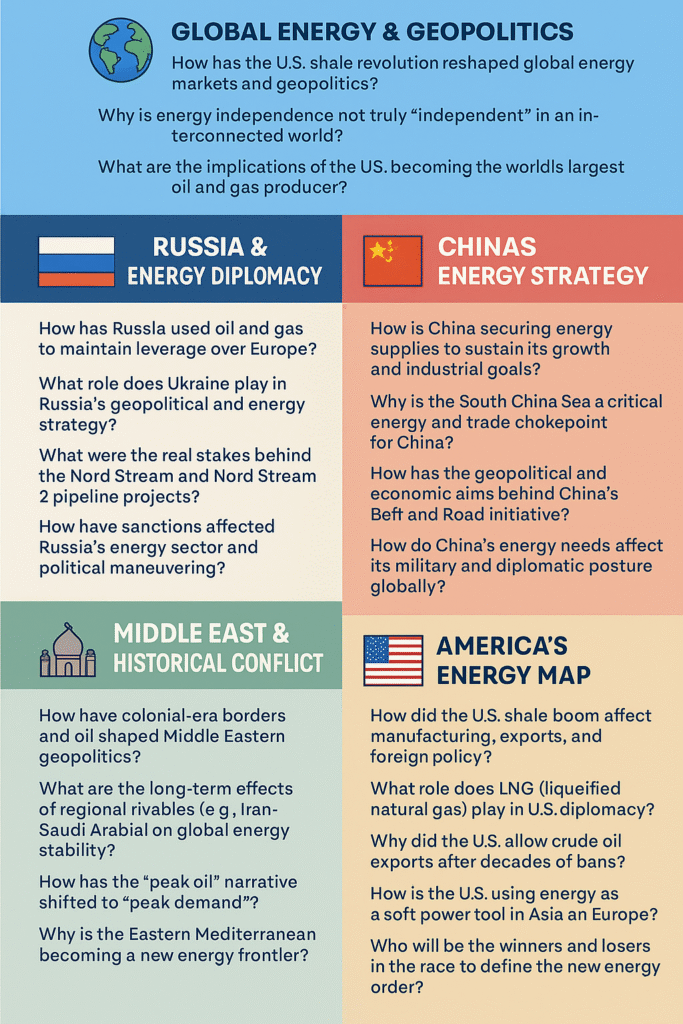While researching the changing landscape of global energy and geopolitics, I came across Daniel Yergin’s book, The New Map: Energy, Climate, and the Clash of Nations. The book provides a detailed map of how nations are being redefined by their energy strategies and the shifting global order.
About the Author
Daniel Howard Yergin (born February 6, 1947) is a renowned American author, economic historian, and consultant specialising in global energy and economic affairs. He currently serves as vice chairman of S&P Global, following the 2022 merger with IHS Markit, where he previously held the same position. Earlier, Yergin founded Cambridge Energy Research Associates (CERA), a leading energy consultancy acquired by IHS in 2004.
He is the author of several influential books, most notably the Pulitzer Prize–winning The Prize: The Epic Quest for Oil, Money, and Power, which established him as one of the foremost chroniclers of the global energy landscape. His follow-up, The Quest: Energy, Security, and the Remaking of the Modern World (2011), continued his deep dive into energy geopolitics, innovation, and global dynamics.
What Is This Book About?
At its core, The New Map is a sweeping examination of how the world is being redrawn by energy. The “map” is both literal and metaphorical—referring to geographic shifts, new energy corridors, strategic realignments, infrastructure projects, climate goals, and the evolving rivalries between major powers.
Yergin takes the reader through the resurgence of U.S. energy via the shale revolution, Russia’s pipeline diplomacy, China’s quest for energy security, the unsettled politics of the Middle East, and the global push toward renewables and decarbonisation. Oil, gas, renewables, and technology are not just fuels or tools—they are instruments shaping the international order.
As someone who worked at the intersection of energy policy and commercial strategy early in my career, The New Map was a real eye-opener. It helped me better understand the geopolitical events unfolding around us. The book reads like a real-time commentary on how energy, economics, and geopolitics are colliding—reshaping the global landscape in ways that carry profound consequences.
Through its deeply researched narrative, the book addresses questions such as:

The Five Major Themes
1. The Shale Revolution and America’s Rebirth as an Energy Superpower
Yergin begins with the U.S. shale revolution, led by figures like George Mitchell. Horizontal drilling and hydraulic fracturing turned the U.S. from an importer into the world’s largest oil and gas producer. It had enormous consequences, both economically and geopolitically.
“What had seemed impossible became a revolution that redrew the energy map of the world.”
This energy abundance allowed the U.S. to shift its foreign policy posture, reduce dependence on the Middle East, and export liquefied natural gas (LNG) to allies.
2. Russia, Pipelines, and the Energy Weapon
Yergin describes how Russia, through Gazprom, used its vast gas reserves and pipelines to influence Europe. The Nord Stream pipelines are emblematic of how energy infrastructure is used for political leverage.
“Gas is not just gas. It is also about power.”
Ukraine’s role as a transit state and the tension it generated with Russia is covered extensively, particularly during the Crimea crisis.
3. China’s Energy Security and the Belt and Road Strategy
China’s thirst for energy drives its diplomacy, investments, and territorial claims. The book details how China is securing its energy lifelines, especially through the South China Sea and Central Asia, and how the Belt and Road Initiative supports this strategy.
“Energy security is inseparable from national security.”
Yergin explains China’s massive investment in renewables and electric vehicles as part of both energy transition and strategic autonomy.
4. The Middle East: Old Conflicts, New Players
From the historical legacy of Sykes-Picot to the recent conflicts involving Iran, Saudi Arabia, and Turkey, the Middle East remains a volatile region. Yergin explores how new gas discoveries in the Eastern Mediterranean are shifting alliances and rivalries.
“In the Middle East, the past is never past.”
5. The Energy Transition and the Climate Agenda
The book turns to the challenge of transitioning from fossil fuels to renewables. Yergin is realistic about the scale and complexity involved. He discusses intermittency, storage, and the competition for clean tech leadership.
Quote: “The world is not only in an energy transition. It is in a Great Electric Transition.”
Key learnings with Examples
✓ Energy Infrastructure is Political Infrastructure
The Nord Stream pipeline from Russia to Germany bypassed Ukraine and deepened European divisions. It was not just about delivering gas; it was about reshaping power dynamics.
✓ Innovation Can Rewire Global Power
Shale technology didn’t come from a national plan; it came from experimentation by independent U.S. producers. That decentralised innovation had global ripple effects, showing how markets can transform geopolitics.
✓ The South China Sea is an Energy Chokepoint
China’s militarization of artificial islands is about more than territory—it’s about securing vital oil and gas shipping routes.
✓ Renewables Face Real-World Constraints
While solar and wind have grown, Yergin highlights the challenges of intermittency and the need for grid modernization and storage.
✓ Energy Shapes Alliances and Conflicts
Whether it’s Russia’s pivot to China, the U.S. using LNG in diplomacy, or Gulf States hedging with diversification strategies, energy considerations underpin many major foreign policy decisions.
Final Thoughts
The New Map is not a forecast. It’s a framework. It helps readers understand the forces shaping global affairs through the lens of energy. It cautions against simplistic narratives and reminds us that the new map is still being drawn—sometimes with pipelines, sometimes with trade deals, and sometimes with conflict.
Yergin’s approach is clear-eyed. He doesn’t preach; he maps. And in a world where energy and geopolitics are in flux, we need maps more than ever.
Notable Quotes:
- “The new map is still being drawn.”
- “The energy world is now multidimensional.”
- “Oil is not just oil. It is also a force.”
If you’re navigating the future of business, diplomacy, or energy policy, this book deserves a spot on your desk.
